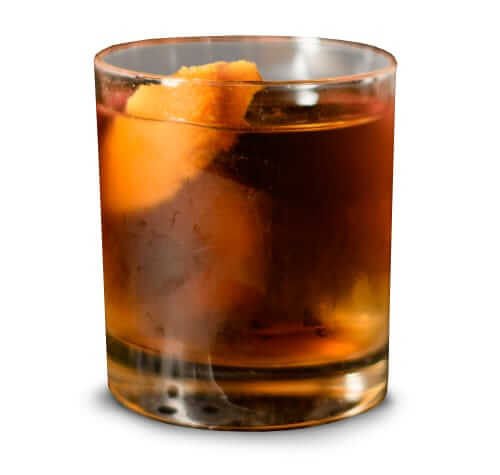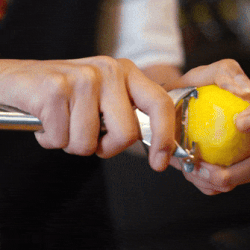There are two words that sometimes appear at the end of a cocktail recipe that I am either relieved or somewhat disappointed to see: No garnish. Sometimes when I mix a drink, I just want to get to it and I don't feel like putting in too much effort, but other times I enjoy investing the time and attention into crafting the perfect cocktail.

But what's the point of a garnish, anyway? Can't you just skip over that part? Fair question. I mean, sure, I guess you could. But that doesn't mean you should. After all, isn't mixing up a cocktail about more than just getting a buzz? It's about the ritual—the alchemy of combining these disparate ingredients to create a drink (hell, an experience) that's greater than the sum of its parts. The best cocktail garnishes will serve many purposes. Most notably:
Advertisement

Taste
Think about the foundational cocktail, the Old Fashioned. That strip of orange skin you pull off the fruit (and maybe trim into a precise parallelogram) adds flavor via the oils expressed over the drink's surface, as well as through infusion as it swims in the spirit. This latter point is why some recipes, like the Sazerac, often require the bartender to express the oils but then discard the zest—lemon oils on the surface of a Sazerac really brighten up the drink and merge well with the whiskey, bitters, sugars and absinthe, but if we invite the lemon peel to stick around, it can shift the balance of the cocktail. Contrast this with the role a lemon peel plays in a martini. The oils pop on the surface, but the peel's infusion floating in the liquid is a welcome addition to the simple and pristine classic.
Fragrance
Those same oils that add flavor also offer a burst of fragrance to tamp down the burn of the whiskey, allowing your nose to anticipate the magical flavors en route to your palate. Think also about a mojito, or mint julep—that bountiful bouquet of mint does more than provide visual appeal. It's meant to tickle your nose with a spearmint freshness that precedes the sip you're about to take.
Visual
According to the old adage, “We eat first with our eyes.” If your cocktail is well prepared, the creator has been deliberate about every element, including its appearance, and the garnish it's finished with provides a sense of punctuation. Take the Mai Tai—it's traditionally served with a mood setting combination of both a mint bouquet and half of a spent lime, turned upside down to conjure the image of an island with a palm tree. One of my personal favorite visual garnishes is the broken umbrella, found in both the tropical New Orleans classic the Hurricane, and the '70s-era Jamaican tipple, the Tradewinds.
So in most cases, don't skip the garnish. If you're not in the mood to go the extra mile, then for heaven's sake, don't make a Mai Tai! Reach into the freezer for that batched Negroni and drop in half an orange wheel—that's simple (and tasty, and fragrant, and pretty) enough.
Best Practices

Citrus Peels
Choose fruit with firm, shiny, blemish-free skin. These will contain the most oils and look nicest in your glass. Use a Y-peeler or a pairing knife to pull a strip of skin off the orange or lemon, retaining just a bit of the white pith to give it structure and make it easier to express.
Cherries/Olives
It's traditional bartender folklore to garnish with an odd number of cherries, olives, cocktail onions, etc. So go with one or three, but never two!
Wheels/Wedges
Propping a big bright lime wheel on the rim of your daiquiri like a peacock showing off immediately imparts a sense of freshness and brightness. Make sure your limes are firm and shiny. Use a sharp knife when cutting citrus so you produce clean edges.
Advertisement
































